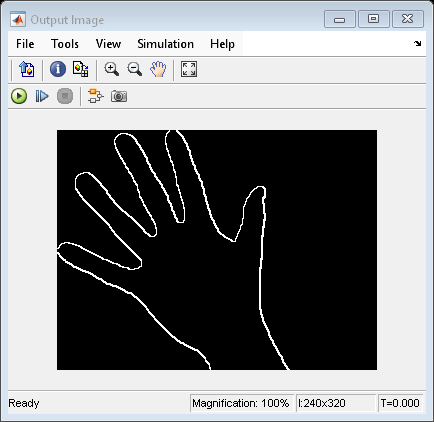Erosion
Find local minima in binary or intensity image
Libraries:
Computer Vision Toolbox /
Morphological Operations
Description
The Erosion block slides a neighborhood or structuring element over an image, finds the local minima, and creates an output matrix from these minimum values. If the neighborhood or structuring element has a center element, the block places the minima there, as shown in this figure.

If the neighborhood or structuring element does not have an exact center, the block has a bias toward the upper-left of the central elements and places the minima there, as shown in this figure.

This block uses flat structuring elements only.
Examples
Ports
Input
Output
Parameters
Block Characteristics
Data Types |
|
Multidimensional Signals |
|
Variable-Size Signals |
|
References
[1] Soille, Pierre. Morphological Image Analysis. Berlin, Heidelberg: Springer Berlin Heidelberg, 2004. https://doi.org/10.1007/978-3-662-05088-0.
Extended Capabilities
Version History
Introduced before R2006a

